Practical risk management for EPC/design-build projects: manage risks effectively - stop the losses First Edition Salmon
Visit to download the full and correct content document: https://ebookmass.com/product/practical-risk-management-for-epc-design-build-proje cts-manage-risks-effectively-stop-the-losses-first-edition-salmon/
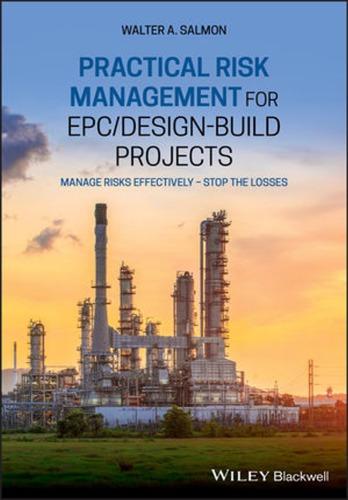
More products digital (pdf, epub, mobi) instant download maybe you interests ...
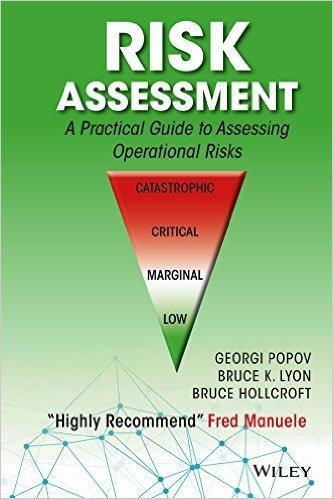
eTextbook 978-1118911044 Risk Assessment: A Practical Guide to Assessing Operational Risks
https://ebookmass.com/product/etextbook-978-1118911044-riskassessment-a-practical-guide-to-assessing-operational-risks/

Understand, Manage, and Measure Cyber Risk: Practical Solutions for Creating a Sustainable Cyber Program, 2nd Edition Ryan Leirvik
https://ebookmass.com/product/understand-manage-and-measurecyber-risk-practical-solutions-for-creating-a-sustainable-cyberprogram-2nd-edition-ryan-leirvik/

Information Assurance and Risk Management Strategies: Manage Your Information Systems and Tools in the Cloud Bradley Fowler
https://ebookmass.com/product/information-assurance-and-riskmanagement-strategies-manage-your-information-systems-and-toolsin-the-cloud-bradley-fowler/
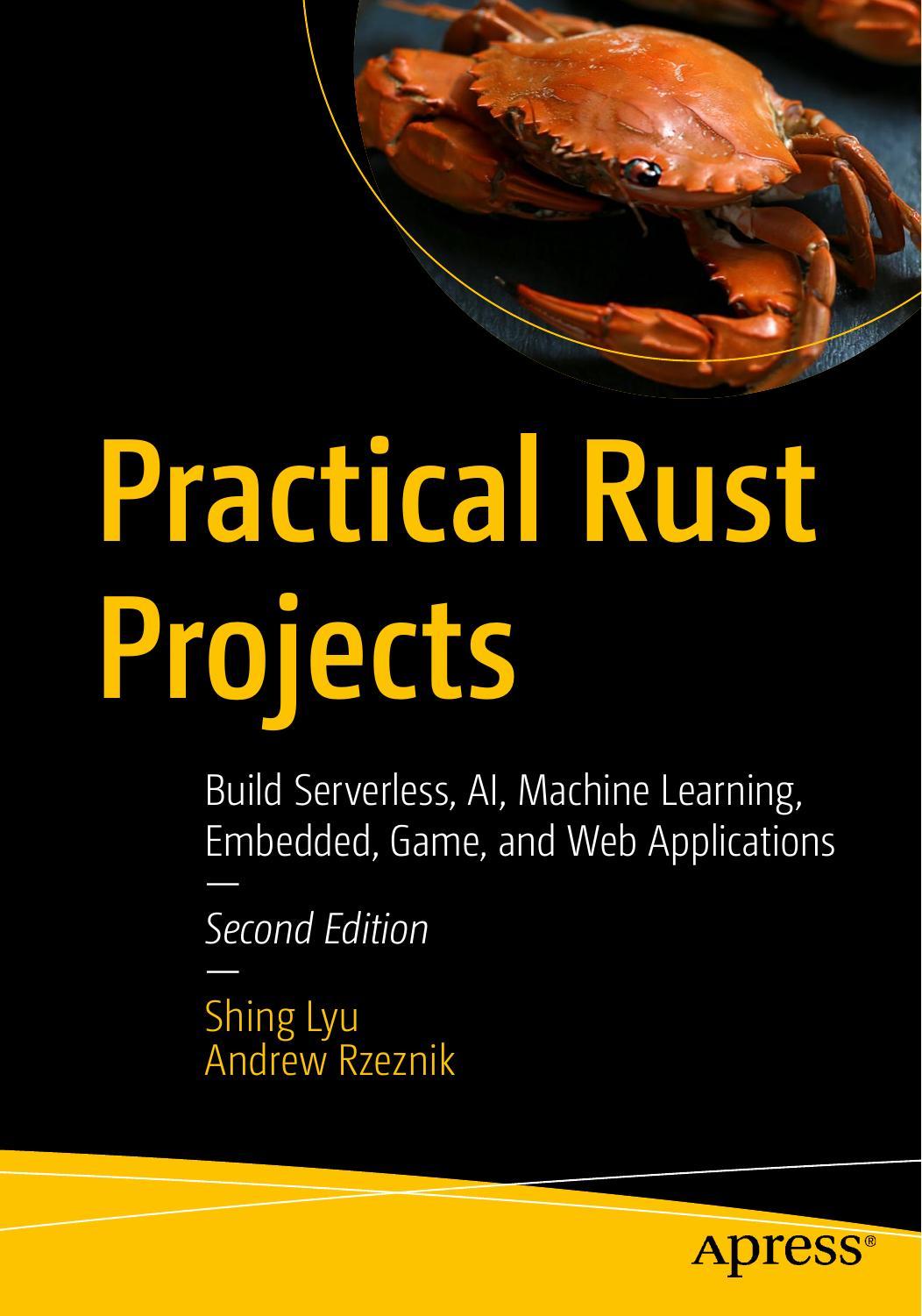
Practical Rust Projects - Second Edition Shing Lyu
https://ebookmass.com/product/practical-rust-projects-secondedition-shing-lyu/

Practical Rust Projects: Build Serverless, AI, Machine Learning, Embedded, Game, and Web Applications (2nd ed.) 2nd Edition Shing Lyu
https://ebookmass.com/product/practical-rust-projects-buildserverless-ai-machine-learning-embedded-game-and-webapplications-2nd-ed-2nd-edition-shing-lyu/
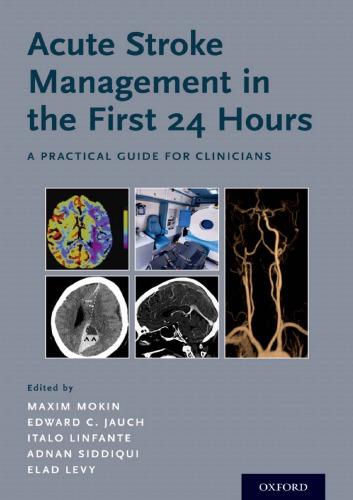
Acute Stroke Management in the First 24 Hours: A Practical Guide for Clinicians 1st Edition Edition
Maxim Mokin
https://ebookmass.com/product/acute-stroke-management-in-thefirst-24-hours-a-practical-guide-for-clinicians-1st-editionedition-maxim-mokin/

Solving for Project Risk Management Christian Smart
https://ebookmass.com/product/solving-for-project-riskmanagement-christian-smart-3/
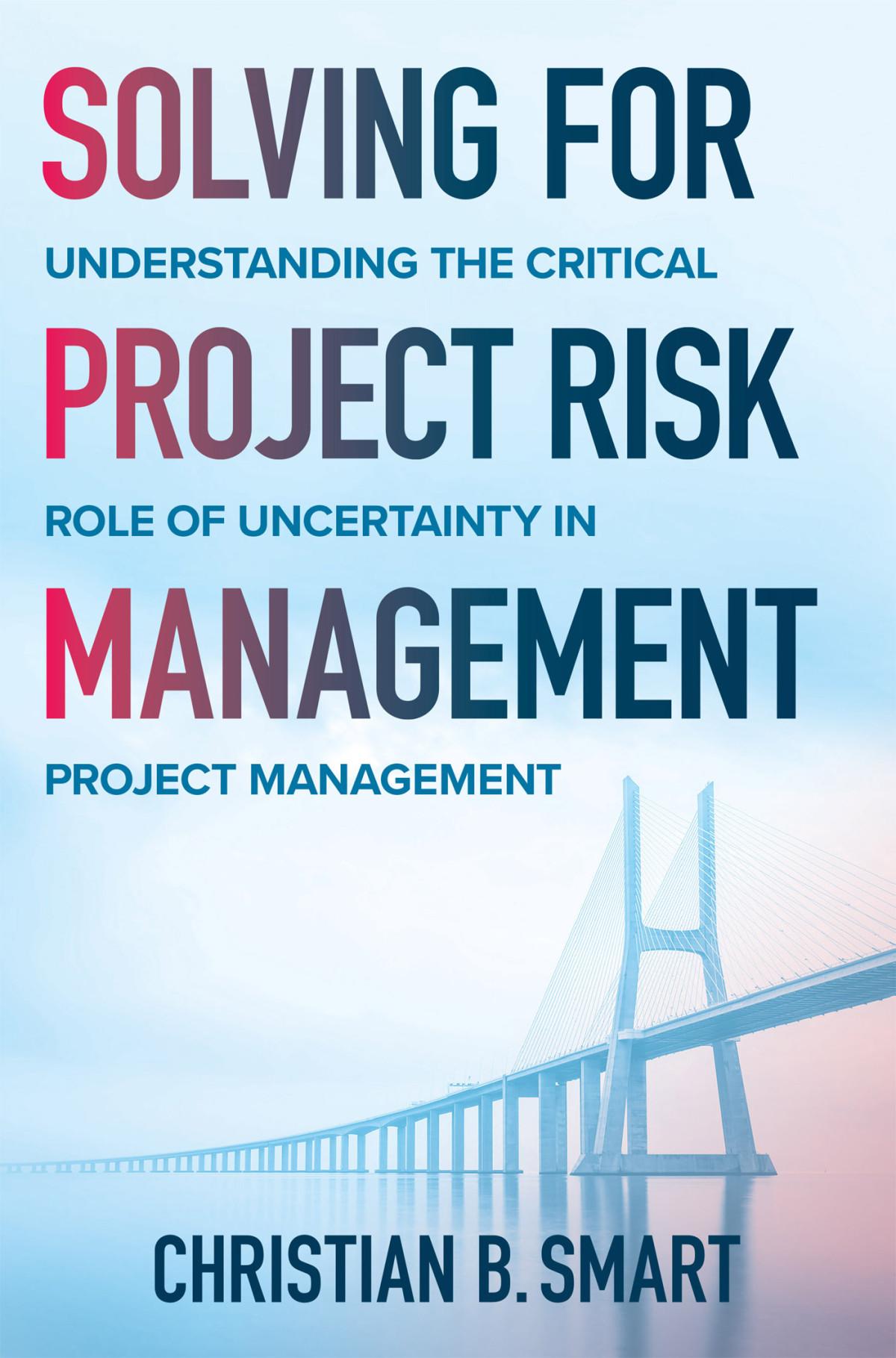
SOLVING
FOR PROJECT RISK MANAGEMENT Christian Smart
https://ebookmass.com/product/solving-for-project-riskmanagement-christian-smart/
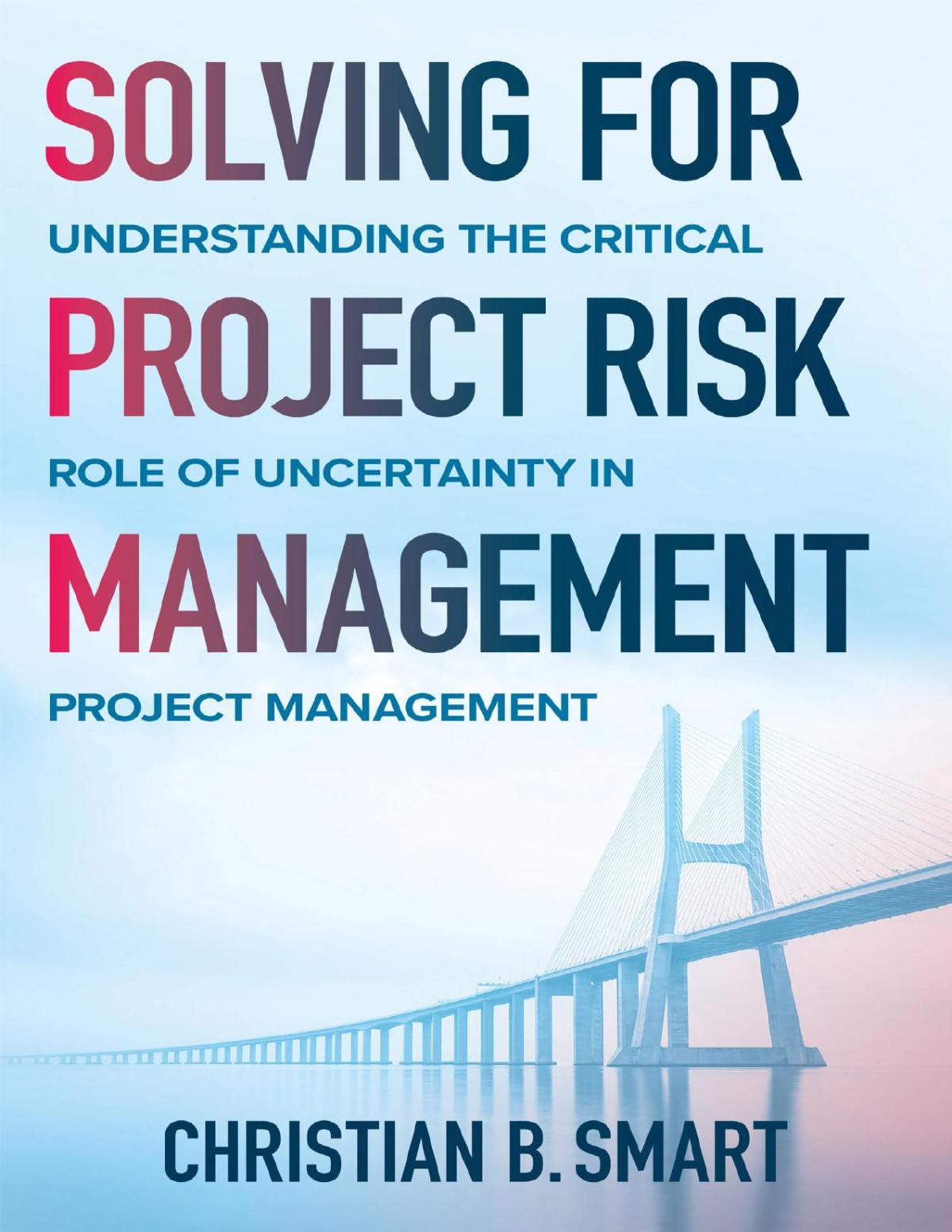
Solving for Project Risk Management Christian Smart
https://ebookmass.com/product/solving-for-project-riskmanagement-christian-smart-2/
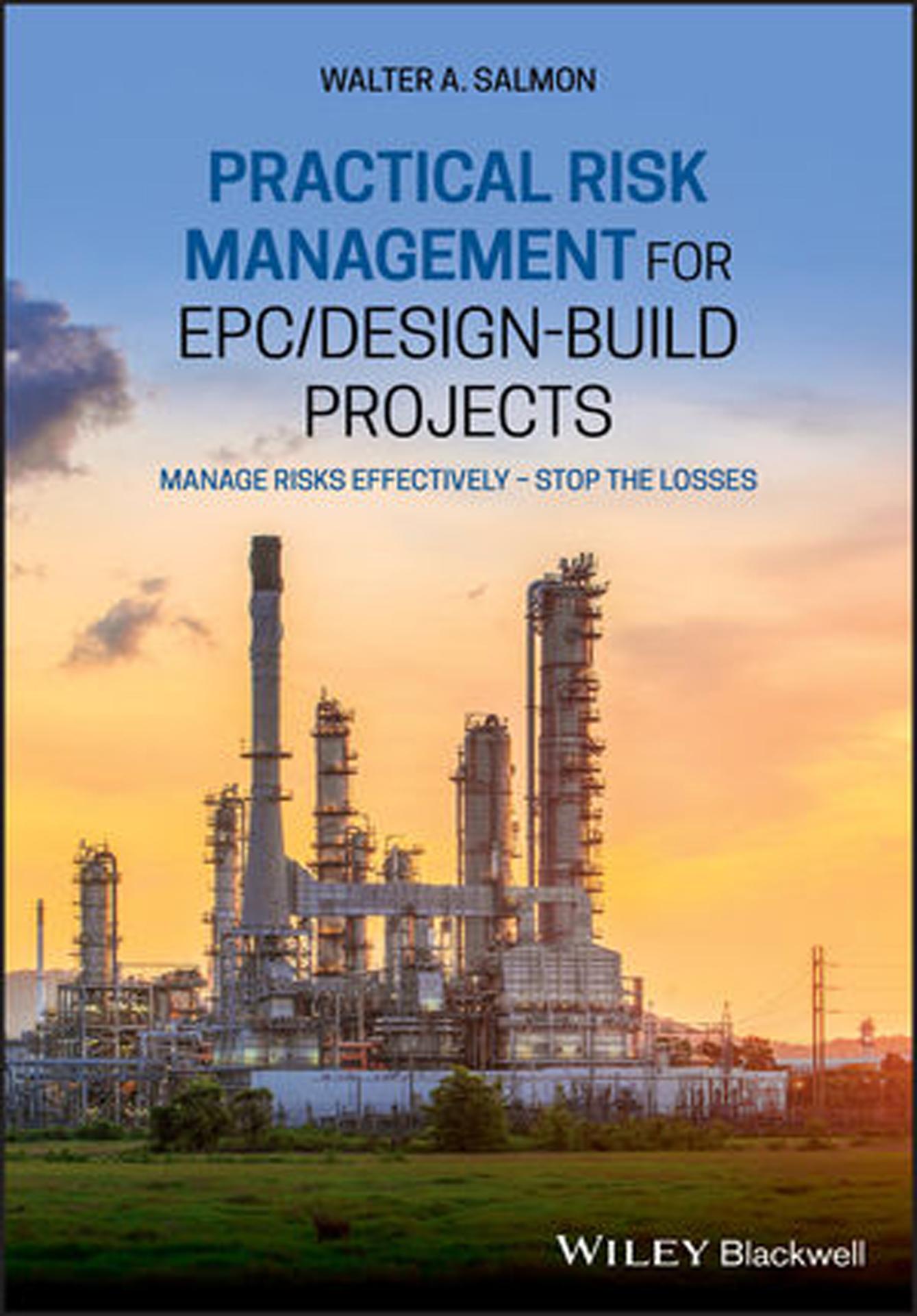
PracticalRiskManagementforEPC/Design-BuildProjects
WalterA.Salmon FRICSMAPMMACostE
Thiseditionfirstpublished2020 ©2020JohnWiley&SonsLtd
Allrightsreserved.Nopartofthispublicationmaybereproduced,storedinaretrievalsystem,or transmitted,inanyformorbyanymeans,electronic,mechanical,photocopying,recordingorotherwise, exceptaspermittedbylaw.Adviceonhowtoobtainpermissiontoreusematerialfromthistitleisavailable athttp://www.wiley.com/go/permissions.
TherightofWalterA.Salmontobeidentifiedastheauthorofthisworkhasbeenassertedinaccordance withlaw.
RegisteredOffices
JohnWiley&Sons,Inc.,111RiverStreet,Hoboken,NJ07030,USA JohnWiley&SonsLtd,TheAtrium,SouthernGate,Chichester,WestSussex,PO198SQ,UK
EditorialOffice
9600GarsingtonRoad,Oxford,OX42DQ,UK
Fordetailsofourglobaleditorialoffices,customerservices,andmoreinformationaboutWileyproducts visitusatwww.wiley.com.
Wileyalsopublishesitsbooksinavarietyofelectronicformatsandbyprint-on-demand.Somecontentthat appearsinstandardprintversionsofthisbookmaynotbeavailableinotherformats.
LimitofLiability/DisclaimerofWarranty
Whilethepublisherandauthorshaveusedtheirbesteffortsinpreparingthiswork,theymakeno representationsorwarrantieswithrespecttotheaccuracyorcompletenessofthecontentsofthisworkand specificallydisclaimallwarranties,includingwithoutlimitationanyimpliedwarrantiesofmerchantabilityor fitnessforaparticularpurpose.Nowarrantymaybecreatedorextendedbysalesrepresentatives,written salesmaterialsorpromotionalstatementsforthiswork.Thefactthatanorganization,website,orproductis referredtointhisworkasacitationand/orpotentialsourceoffurtherinformationdoesnotmeanthatthe publisherandauthorsendorsetheinformationorservicestheorganization,website,orproductmayprovide orrecommendationsitmaymake.Thisworkissoldwiththeunderstandingthatthepublisherisnotengaged inrenderingprofessionalservices.Theadviceandstrategiescontainedhereinmaynotbesuitableforyour situation.Youshouldconsultwithaspecialistwhereappropriate.Further,readersshouldbeawarethat websiteslistedinthisworkmayhavechangedordisappearedbetweenwhenthisworkwaswrittenandwhen itisread.Neitherthepublishernorauthorsshallbeliableforanylossofprofitoranyothercommercial damages,includingbutnotlimitedtospecial,incidental,consequential,orotherdamages.
LibraryofCongressCataloging-in-PublicationDataappliedfor
ISBNHB:9781119596172
CoverDesign:Wiley
CoverImage:©krisanapongdetraphiphat/GettyImages
Setin10/12ptWarnockProbySPiGlobal,Chennai,India
PrintedandboundbyCPIGroup(UK)Ltd,Croydon,CR04YY 10987654321
Contents
Forewordxiii
Prefacexv
Acknowledgementsxix
1Introduction1
1.1TheBook’sFocusandObjectives 1
1.2TheBook’sContentandStructure 4
1.3GeneralityofContractualAdviceGiven 7
1.4CommonElementsforConstructionProjects 8
2ConstructionProjectImplementationRoutes11
2.1DifferentApproaches 11
2.2TraditionalContractingApproach 11
2.2.1DesignTeam’sAppointmentandRole11
2.2.2Employer’sParticipation12
2.2.3Contractor’sRoleandResponsibilities13
2.2.4TraditionalApproachAdvantages13
2.2.5TraditionalApproachDisadvantages14
2.3Design-BuildApproach 14
2.4EPCApproach 16
2.4.1EPCProjectSuitability16
2.4.2Contractor’sObligations17
2.4.3Employer’sParticipation17
2.4.4StandardEPCContractsAvailable18
2.4.5GeneralNotesofInterest20
2.5EPCMApproach 21
2.6EmployersPreferLump-SumContracts 23
2.7Fixed-PriceLump-SumContracts 25
2.8SelectingtheEPCContractor 26
3EPCProjectRiskManagementOverview29
3.1ProjectRiskManagement–Definition 29
3.2ConstructionProjectHazardsAbound 29
3.3ImportanceofProjectRiskManagement 31
3.4CorporateRisksVersusProjectRisks 32
3.5GreaterRisksforEPCContractors 33
3.6PrincipalDisasterAreasonEPCProjects 34
3.7MaintainingtheProjectSchedule 36
3.8DepartmentalInterfaceIssues 36
3.8.1Rework37
3.8.2DelayedTechnicalBidEvaluations38
3.8.3LateMobilisationofProcurementTeam38
3.8.4Red-LineDrawingsLeftTooLate39
3.9ForginganIntegratedImplementationTeam 39
3.10AllocatingResponsibilityforHandlingRisks 40
4EPCProjectPre-ImplementationProblems43
4.1BiddingProcessPitfalls 43
4.2FailuretoEmbraceLessonsLearnt 44
4.3FailuretoUnderstandContractTerms 45
4.4Qualifications,DeviationsandExceptionsList 46
4.5FalseManagementResourcingPlan 47
4.6UnderestimatingtheCosts 48
4.7ConceptualDesignBidPricingProblems 50
4.8AgreeingtoInadequateCompletionTime 50
4.9RelianceonEmployer’sInformation/Data 54
4.10LateApprovalofCDVR 54
4.11GatewayBetweenFEEDandDetailedDesign 55
4.12ExtendedReviewPeriodforDeliverables 55
4.13ObjectingtoImpracticalReviewProcess 56
4.14UnderestimatingEquipmentProcurementPackages 58
4.15RejectionofCountryofOrigin 59
4.16ResponsibilityforGovernmentalProblems 60
4.17PerformanceBondEarlySubmission 60
4.18RequirementforOn-DemandBonds 61
4.19ImportDutyResponsibilities 62
4.20LocalContentObligationsDownplayed 63
4.21Contractor’sBidModificationsIgnored 64
4.22RelyingonCarrots 65
4.23SquarePegsandRoundHoles 66
4.24FailuretoChecktheMargin 68
5OverseasEPCProjectPreparatoryWork71
5.1CriticalPathIdentification 71
5.2SettingUpContractor’sAdministrativeSystems 73
5.3DeterminingAppropriateManagementStructure 73
6ProjectRoles,FunctionsandResponsibilities75
6.1TheProjectManagementConsultant 75
6.1.1PrimaryFunctions75
6.1.2PMC’sDutyandLoyaltyistoEmployer76
6.1.3PMC’sDifferentTakeonTime77
6.1.4Employer’sDirectPersonnelinLieuofPMC78
6.2TheBoardofDirectors 79
6.2.1PrimaryFunctions79
6.2.2EthicalComplianceResponsibilities79
6.2.3ShopFloorComplianceProblems81
6.2.4CorporateDirectivesforLimitingComplianceTransgressions82
6.2.5SpeedingUpFinancialDecision-Making83
6.2.6EnsuringVeracityofReporting84
6.3TheProjectDirector 86
6.3.1StandingofProjectDirector86
6.3.2PD’sFunctionsandResponsibilities86
6.3.3GoodCommunicationandQualityReporting87
6.3.4ImportanceofaGoodPD89
6.4TheProjectManager 90
6.4.1PrimaryFunctions90
6.4.2PM’sReportingDuties93
6.4.3PreparationofProjectExecutionPlan95
6.4.4PM’sResponsibilityforRiskManagement96
6.4.5PM’sKeyConsiderationsforMinimisingRisks97
6.4.5.1IdentifyingandManagingtheProject’sMajorRisks97
6.4.5.2HelpingtoDeveloptheProjectExecutionPlan98
6.4.5.3Organising,MonitoringandControllingtheProject’s Resources98
6.4.5.4EnsuringSafeWorkingatAllTimes99
6.4.5.5DirectingandMonitoringtheProject’sManagement Staff100
6.4.5.6MonitoringandReportingontheProject’sActual Progress101
6.4.5.7Developing/ImplementingAppropriatePlanstoRedress Delays104
6.4.5.8CompletingwithintheAgreedTime-Frame105
6.4.5.9DeliveringtheExpectedQualityofFinished Product107
6.4.5.10CompletingwithintheApprovedBudget108
6.4.6PM’sPreferredCommunicationStyle110
6.5TheProjectControlsManager 110
6.5.1RangeofFunctionsMayVary110
6.5.2PCM’sPrimaryFunctionsintheWiderRole111
6.5.3ImportanceofthePCM’sReporting112
6.5.4OverloadingthePCM’sResponsibilities113
6.6TheProjectControlsDepartment 113
6.6.1TheDepartment’sObjectives113
6.6.2PlanningandControlsExplained115
6.6.3PCD’sPlanningandControlsinPractice116
6.7ThePlanning/SchedulingTeam 117
6.7.1UnrealisticallyShortProjectSchedules117
6.7.2ImportanceofaSoundProjectSchedule118
6.7.3TheProjectSchedule’sOwner119
6.7.4ManagersMustEmbracetheProjectSchedule120
6.7.5CompilingtheWorkBreakdownStructure121
6.7.6DeterminingthePlanningStrategy121
6.7.7FinalisingtheBaselineProjectSchedule122
6.7.8SchedulesBeyondtheProjectSchedule122
6.7.9MajorRisksforthePlanningManager123
6.7.10RetrospectiveCompilationofProjectSchedule125
6.8TheEngineeringManager 125
6.8.1PrimaryResponsibilities125
6.8.2TheEngineeringDepartment’sCustomers127
6.8.3KeyPreparatoryActivitiesforEngineeringWork127
6.8.4PrimaryRisksforEngineeringWorkActivities130
6.8.4.1LateDeliveryofEngineeringDocumentation130
6.8.4.2GradualScopeCreep131
6.8.4.3InadequateMonitoringofEngineering Subcontractors131
6.8.4.4DisruptionofInformationManagementTasks132
6.8.4.5FailuretoRationalisetheInformationManagement System132
6.8.4.6RelianceonDocument-focusedProgressReporting133
6.8.4.7ProblemsCausedbyEmployer’sNon-readiness134
6.9TheProcurementManager 135
6.9.1PrimaryResponsibilities135
6.9.2TheProcurementDepartment’sPrimeCustomer136
6.9.3DecidingEquipment/DeliverablesDeliveryDates136
6.9.4ConsiderationsforLong-LeadItems137
6.9.5LateEngineeringDeliverables138
6.9.6RiskofCorruptionOccurring138
6.9.7TrackingManufacturingandDeliveryStatus139
6.9.8EffectiveUseofExpediters140
6.9.9AvoidingDelaysfromEmployer’sSide140
6.9.10DueDiligenceonVendorsandSubcontractors142
6.9.11In-CountryServicesProblems142
6.9.12CustomsClearanceProblems143
6.9.13ReducingtheRisksofNon-PerformingServiceProviders143
6.9.14ObtainingAllAvailableDiscounts144
6.9.15ArrangingOn-SiteSupportServices144
6.9.16OrderingMoreSparesthanNecessary145
6.10TheExpediting/LogisticsManager 145
6.10.1PrimaryResponsibilities145
6.10.2TheExpediter’sRole146
6.10.3WhereVendorsCanFail146
6.10.4SparePartsDocumentation146
6.10.5TheLogisticsSupportActivities147
6.11TheConstructionManager 147
6.11.1PrincipalFunctionandResponsibilities147
6.11.2WorkingQuickly,EffectivelyandSafely149
6.11.3PoorQualityWorkDelaysPre-Commissioning149
6.11.4ImplementationPitfalls150
6.11.4.1NotFollowingtheProjectSchedule150
6.11.4.2NotHoldingRegularFormalMeetings150
6.11.4.3NotPreparingforMobilisationAdequately150
6.11.4.4NotMakingSurpriseWorkAreaVisits151
6.11.4.5NotHoldingJobPerformersAccountable152
6.11.4.6NotDocumentingChangesAdequately152
6.11.4.7NotLimitingAuthorityforManagingResources152
6.11.4.8NotAssessingProductivityProperly153
6.11.4.9NotProgressingCompletionCertification Adequately153
6.11.5SubcontractingRisks156
6.11.6PermittoWorkCompliance158
6.11.7DelayRisksCausedbySuppliers158
6.11.8ControllingWastage158
6.12TheCommissioningManager 160
6.12.1PrimaryResponsibilities160
6.12.2MajorRisks161
6.12.2.1SparePartsAvailability161
6.12.2.2CommissioningSafely161
6.12.2.3CommissioningEquipmentJointlywiththeEmployer’s Team162
6.12.3EmergencyVehiclesRequirements162
6.13TheOperationalReadinessManager 162
6.13.1PrimaryFunction162
6.13.2RelianceontheInformationManagementTeam163
6.13.3InputsfromtheOperationalReadinessManager163
6.13.4LackofOperationalReadinessInformationfromOthers164
6.13.5OperationalReadinessDocumentationFocus164
6.13.6EmployerPressuretoImproveFacilities164
6.14TheQA/QCManager 165
6.14.1QualityAssuranceVersusQualityControl165
6.14.2QA/QCManager’sPrimaryResponsibilities165
6.14.3MainRisksforQA/QCManager166
6.14.4AvoidingQualityAssuranceRisks166
6.14.5ReducingQualityControlRisksontheSite166
6.14.6ReducingVendorQualityControlRisks167
6.15TheHSEManager 167
6.15.1ImportanceofHSEInputsfromEverybody167
6.15.2PrimaryResponsibilities168
6.15.3SafetyProvisionsandTraining168
6.15.4EnforcingHSERulestoPreventAccidents169
6.15.5MotivatingOn-SiteHSEOfficers170
6.15.6Off-SiteHSEIncidents170
6.15.7SafetyMomentChats171
6.16TheCampBoss 171
6.16.1PrimaryResponsibilities171
6.16.2MajorRisks172
6.17TheProjectInformationManager 173
6.17.1ImportanceofInformationManagement173
6.17.2InformationOverview173
6.17.3ElectronicDocumentManagementSystems174
6.17.4PIMRoleandPrimaryResponsibilities176
6.17.5MajorRisksforthePIM177
6.17.6DedicatedDataInputters177
6.17.7InformationManagementSupportPersonnel178
6.18TheDocumentControlManager 179
6.18.1StandardisedDocumentManagementSystem179
6.18.2ControllingCommunications180
6.18.3VettingDocumentsBeforeIssuing180
6.18.4RestrictingEmailUsage181
6.18.5BenefitsofaStandardDocumentsLibrary181
6.19TheInformationTechnologyManager 182
6.19.1ITSystemSecurity182
6.19.2BackingUpWorkfromPersonalComputers182
6.19.3EnsuringIntegrityofComputerisedData182
6.19.4ReducingContractor’sSoftwareCosts183
6.20TheInterfaceManager 184
6.20.1PrimaryFunctionandResponsibilities184
6.20.2InterfaceManagementPlan184
6.20.3ExternalandInternalInterfacesExplained185
6.20.4Identifying/LocatingInterfaces186
6.20.5InterfaceSlip-Ups187
6.20.6ClosingInterfaceActivitiesisHardWork188
6.21TheContractAdministrationTeam 189
6.21.1DeterminingtheCompilationoftheTeam189
6.21.2TheProjectContractManager190
6.21.3TheContractAdministrationManager190
6.21.4TheSubcontractsManager191
6.21.5CompilingtheContractSummary192
6.21.6IdentifyingRiskExposure192
6.21.7ImportanceofKeepingRecords193
6.21.8RiskofCollusioninMeasurement/CostingTeam195
6.21.9FacilitationRoleoftheContractAdministrationTeam195
6.21.10IllusoryClaims196
6.22TheHumanResourcesManager 196
6.22.1PrimaryResponsibilities196
6.22.2BecomingtheEmployerofChoice197
6.22.3RecruitmentIssues198
6.22.4EmergencyReplacementforKeyPersonnel199
6.23TheAdministrationDepartment 200
6.23.1PrimaryResponsibilities200
6.23.2ProvidingBack-UpSupporttoSiteQuickly200
6.24TheFinancialManagementTeam 201
6.24.1PrimaryResponsibilitiesofFinanceManager201
6.24.2TheBudgetController202
6.24.3ControllingPurchases203
6.24.4KeepingTrackofExpenditure204
6.25TheComplianceTeam 204
6.26TheLegalDepartment 206
6.26.1UtilisingExternalLegalTeam206
6.26.2UtilisingDisputeAdjudicationBoards207
7ReducingJoint-Venture/ConsortiumRisks209
7.1JointVentureVersusConsortium 209
7.2JVConsiderations 209
7.3SettingUpaJVSteeringCommittee 210
7.4ObjectivesofJVSteeringCommittee 211
7.5JVMembersarePartners 212
8ClaimsManagementRisksandProblems215
8.1RelyingonClaimstoAchieveProfitability 215
8.2FactorsLegislatingAgainstaClaim’sSuccess 216
8.3KeyIngredientsforWorthwhileClaims 217
8.4ProvingExcusableDelay 217
8.5KeyComponentsofSuccessfulClaims 218
9IdentifyingHazardsandManagingtheRisks219
9.1Introduction 219
9.2PotentialHazardsforConstructionProjects 220
9.3ResponsibilityforProjectRiskAssessment 222
9.4IdentifyingandManagingProjectRisks 224
9.5ProjectMainRisksRegister 227
9.6RiskAssessmentTeamInputs 228
9.7RelativeRiskFactorAssessment 229
9.8RisksArisingfromSafetyStudies 230
9.9DealingwithSafetyRiskstoOn-SitePersonnel 232
9.10DealingwithHealthMattersforOn-SitePersonnel 236
9.11DealingwithRiskstotheEnvironment 237
ListofFigures:
Figure6.1InterfacesforEPCProject’sDepartmentsandTeams114
Attachments:
AttachmentAMatrixofProjectRiskAreasandCorrespondingRiskManagement Solutions239
AttachmentBMatrixofPrimeRiskConsiderations,Impacts& Consequences243
AttachmentCExampleProjectMainRisksRegister245
AttachmentDStepsinTaskRiskAssessment249
AttachmentETaskHazardAssessmentWorksheet251
Appendices:
AppendixAAbbreviationsandAcronyms253
AppendixBGlossary255
AppendixCEPCProjectManagementTeamOrganisationStructure269
AppendixDEPCProjectDepartmentalOrganisationStructure271
AbouttheAuthor275
Index277
Foreword
Withinanyjurisdictiontherearecyclicaldeviationsinthetypeofandinvestmentin majorprojectsthataredrivenbyinvestmentpriorities,politicalmandatesandcorporate strategies.However,atagloballeveltherehas,andwillcontinuetobe,hugeinvestment. In2018,theinvestmentinmajorprojectswasaround$4trillionand,byallaccounts,this investmentwillincreasesignificantlyyearonyearinanattempttoservicetheworld’s rapidlyexpandingpopulation.
Theprocurementmethodontheseprojectsvariesbut,inthemain,theriskofboth designandconstructionispassedtothecontractingteameitherthroughadesignand build,EPCoranEPCvariantframework.Thatisallwellandgood,buttherealityof theprocurementprocessisthatthereisoftenatotaldisconnectbetweenthosethat draftthecontractandthosethatdelivertheproject.Thecontractisthesinglemost importantdocumentonaprojectandintheorycreatesaplatformofcertainty,allowing thosepartiestoittoorganiseandplan.However,somuchofthefocusincontractsison riskallocationandriskconsequence.Ifoneaskslawyersthesortsofthingsthataremost importantonamajorproject,theywillsaythingssuchaslimitationofliability,price, terminationrightsandsoon.However,ifoneaskstheprojectteamwhatthingsaremost important,theymaysaythingslikereachingandmaintainingaconsensusaroundscope, havingclarityastotheresponsibilityofthepartiesandgoodcommunicationlines.In otherwords,intheeyesoftheprojectteam,whatdrivessuccessinprojectsisabout relationshipsandunderlyinggovernance,notmanagementofriskconsequence.
IknowofanumberofverygoodbooksonthesubjectofEPCcontractsandmajor projects,butbyandlargethesearewrittenbylawyersforlawyers,andsothefocus tendstobeonthesortsoflegalissuesIidentifiedabove,sometimeswithpracticaladvice obtainedvicariously.Theuniqueofferingofthisbookisthatitpurposefullyfocusesaway fromcontractinterpretationandlegalesetowardsnavigatingthereaderthroughapath tounderstandingtheissuesandsolutionsonliveprojectsfromtheperspectiveofsomeonewhohasbeenthereandseenitmanytimesover.Theauthor’sexperience,working forover40yearsatthecentreofmajorprojectsacrossvarioussectorsforsomeofthe world’sbiggestcompanies,hasbeenmethodicallyandlogicallydistilledintoatreasure chestofwisdom.Thebookclearlysetsouthisunderstandingandinterpretationofrisk andputativeproblems.Itexplainsingreatdetailallofthekeyrolesonmajorprojects andhowthoserolescanandshouldinterfacesuccessfully.Throughoutthechapters,it
offerspracticaltipsandguidancefornavigatingaroutetoasuccessfulproject,orplacing thecontractorinthebestpossiblepositionwhenproblemsarise.
Thebookwillbeofgreatusetocontractors,projectmanagers,employersandlawyers.It providesinsightforthoseresponsibleformanagingprojects,thosewhowishtoproperly understandthevariousroles,interfacesandrisksthatneedtobeconsidered,andto lawyerswhowishtogainabetterunderstandingofhowmajorprojectsoperateand whatadjustmentstodraftingmightbetaken,orliveprojectadvicemightbegiven,to avoidormitigaterisk.Ifevenpartoftheguidancegiveninthisbookisputintopractice, Ihavelittledoubtthattheincidenceofdisputeswoulddramaticallyreduce,aswould thenegativeimpactofrisksonthecontractor’sprofitability.
JamesPickavance Partner–JonesDay
Preface
TheideaformetowritethisbookcameaboutfromthemanyquestionsIreceivedfrom colleagueswhenIwasassistingProjectManagersinthecompilationandupdatingofthe RisksRegistersfortheprimaryrisksparticulartotheirEngineering,Procurementand Construction(EPC)Projects.Atthesametime,IwasofteninvolvedinchairingtheRisk ManagementMeetingsonbehalfofthoseProjectManagers,andthenfollowingupthe requiredactionswithmycolleagues.Myparticipationinthosetaskscameaboutdespite myprincipalrolehavingbeentoundertakethecontractadministrationfunctionsforthe megaEPCProjectsIhadbeenallocatedto.Thiswassimplybecausemostothermanagersseemedtobelievethatriskmanagementwasmoresuitedtomylineofworkthan theirs.Inthecourseofundertakingthosetasks,someofmyco-workersfromwhom inputwasrequiredtoldmethattheconceptofriskmanagementwasamysterytothem, anditwasthereforeasubjectthattheyshiedawayfrom.Ihadafairdegreeofsympathy forthem,largelybecause,whenIfirstembarkedonstudyingthesubjectofprojectrisk managementinthemid-1980s(aspartofaprojectmanagementcourseIwasundertakinginpre-internetdays),Iwasoverwhelmedbythealmostpureacademictreatmentof thesubject(ascomparedwiththepracticalapplicationIhadbeenlookingfor).Sadly,I findthatthisisstillthecasetoday,asmyresearchontheinternethasrevealed.
Evensadderisthefactthat,despitetheinitialgreathopesfortheEPCProjectapproach, manyofthecompletedmegaprojectsfailedtomaketheprofitlevelthatthecontractorshadanticipated,andagreatnumberofsuchprojectsendedinfinancialdisaster forthecontractorsinvolved.Mybasedisciplineofquantitysurveying,coupledwith thecontract/claimsadministrationandriskmanagementworkIundertook,provided mewiththeidealstandpointtoseewhereandwhythingshadgonewrongfinancially ontheprojectsIhadbeendirectlyassociatedwith.Ialsoobservedthesameproblems occurringwithmonotonousregularityfromoneprojecttothenext.Myanalysisofthe countlessloss-makingissuesIhadtodealwithledmetoconcludethatthevastmajorityofproblemsoccurredforthesamebasicreason.Simplyput,manypeoplewhose responsibilityithadbeenforhandlingtheworkeffectivelywerenotfullyawareofall therisksinvolved(orthefactthatitwastheirdirectresponsibilitytotakecareofsuch risks).Becauseofthat,theyhadnottakenstepstoensurethatsuitablemitigationplans wereputinplacetopreventthoserisksturningintouglyproblems.
Inprinciple,managingconstructionprojectswellispredominantlyallaboutthecontractorapplyingcommonsense,butitquiteobviouslyisnowherenearaseasyasthat maysound.AsIwasinthethroesofwritingthisbook,newsofthedemiseofCarillionplccamethrough(itwentintocompulsoryliquidationon15January2018).That undoubtedlysentshiversdownthespinesofanumberofotherlargecontractorsacross theglobe.Almostcertainly,itwastheimproperhandlingoftheday-to-daymajorrisks bytheseniormanagementteamthatbroughtCarilliondown,andwhichwastherefore ahighlypreventableoutcome.Intheconstructionindustry,suchdisastersarerarely broughtaboutbysuddenunexpectedevents.IamsurethattheCarillionmanagement teamappliedcommonsenseintheirbusiness,butIamequallysurethatitcouldnot havebeenapplied100%ofthetime,andcertainlynottothemostimportantrisks.
Today,theterm‘operationalexcellence’isverymuchinvogue,andmostlikelythe Carillionmanagementteamalsothoughttheyhadthatsubjectcracked.However,I considerthat,withoutattentionbeingpaidtoexcellenceinriskmanagementatall levels,meaningfuloperationalexcellencewillremainapipedreamformostcontractors. IthereforedecidedthatitwasperhapstimeIputdownmyfindingsinabook,based ontheexperienceIhavegainedoverthelast20yearsworkingonEPCProjects,about wherethemajorrisksliefortheEPC/Design-Buildcontractor,andhowbesttohandle thoserisks.MyprimaryobjectivewassimplytotrytohelpputtheprofitbackintoEPC andDesign-BuildProjectsforthebenefitofthosecontractorswhoarestrugglingwith thatissue.
ThisbookisnotaimedatTier-1contractors(becauseotherwiseIwouldquiterightly beaccusedoftryingtoteachagrandmothertosuckeggs).Rather,mytargetaudience ismid-rangeconstructioncompaniesandtheirindividualmanagers(oraspiring managers,stilllearningtheropes)whowouldliketoseeacomprehensiveoverviewof wherethemajorriskslieinwaitforthemonEPC/Design-BuildProjects.Manysuch contractorsarewayoffbeingTier-1standardoperators.However,Ihavemetmany contractors’directorswhothinktheirrespectivecompanieshavemadeittothebig leaguewhen,inreality,theircompaniesstillhavealongwaytogobeforetheycould beconsideredtobeleadersintheirfield.Ifanycontractorisexperiencingthesituation wheretoomanyoftheproblemsoutlinedinthisbookareregularlyoccurringintheir organisation,thenIwouldsuggestthatsomeurgenttraining/re-trainingisneededfor theirmanagementteams.
Themanydifferentstandardformsofcontractusedintheconstructionindustry(as wellasallthebespokecontractsIhaveseen)incorporatecertainkeywords/termsas propernouns.Inanattempttomakethetechnicalcontentofthisbookaseasyaspossibletoread,Ithereforechosetousethosesamewords/termsincapitalisedform,as wellasaddinafewextrawords/termsofmyown.Further,forthepurposeofensuringclarity,Itriednottousetoomanyad-hocabbreviationsinthebodyofthebook (e.g.afterthefirstappearanceofthetitle‘EngineeringManager’itcouldthereafterhave beenreplacedthroughoutwiththeinitials‘EM’).Instead,duetothehugenumberof personnelandtechnicaltermsinvolvedintheconstructionindustry,Ihavechosento writethewordsoutinfullinmostcases.Theprimaryexceptionis,ofcourse,theterm ‘EPC’.Theotherexceptionsoccurinsituationswhereaname/titlerepeatsmanytimes
withinthesamepassage/sectionorwheretheabbreviationisalsoverywellknown(such as‘HR’forHumanResources,‘HSE’forHealth,SafetyandEnvironment,and‘QA/QC’ forQualityAssuranceandQualityControl).Thereasonsfortakingthisapproachwere simpleenough:
• Whencompilingthedraftofthisbook,Iinvitedcommentsfromvariousclosecolleaguesworkingintheconstructionindustry.Almosteverypersonoptedtogofirst tothesectionthatdealtwiththeirspecificdisciplineand,onanumberofoccasions, Iwasaskedwhatcertainoftheabbreviationsmeant.ThatiswhenIrealisedthat manyreadersmayalsodothatand,iftheyarefacedwithaswatheofabbreviations theydonotrecognise,thentheirappreciationofthecontentcouldbesomewhat diminished.
• Ihavealsoobservedthatabbreviationsremainfreshinareader’smindforonlya shorttime,anditcanbecomeveryirritatingtohavetoflipbacktoberemindedwhat theymean,sinceitcanoftenreducetheimpactofwhatisbeingread.However,for thesakeofgoodorder,IhaveincludedinAppendixA(AbbreviationandAcronyms) afulllistoftheabbreviationsandacronymsIhaveused.Ihavealsoprovided,in AppendixB(Glossary),someextensivedefinitionsofcertainofthekeytechnical andothertermsusedinthisbook.
IfwhatIhavewrittenhelpsthoseresponsibleforrunningEPCProjectstomanagethe risksbetterandmakemoremoneyfortheirefforts,thenIwillhaveachievedmyprincipalobjective.IfIhavealsoinspiredreaderstoembracetheconceptofprojectrisk managementmoreenthusiastically,thatwouldbeanaddedbonus,notjustformebut fortheconstructionindustryatlarge.
Acknowledgements
Thesterlingeffortsofmyfriendof35+ years,MrAllanMaxwell,areherebyacknowledged,whoseinputinthemiddlestagesofmywritingwasinvaluable,sinceitcontributedsubstantiallytotheimprovementofthecontent.Notonlythat,MrMaxwell’s positivecommentsandencouragementprovidedmewiththeimpetusIneededtosoldieronandcompletethemanuscript.Anumberofothercolleagueshavealsobeenvery helpfulinprovidingcommentsandsuggestingimprovementsoverthetwoyearsplusit hastakenmetocompletethemanuscript,nottheleastofwhomisMrShahnawazAziz; myheartfeltthanksgotoallofthem,toonumeroustomention.
Mydaughter,AnitaSalmon,alsoearnedmygratitudeforherdedicationandpatiencein carefullyworkingherwaythroughmyinitialdraftsinordertocleanupmygrammarand correctotherobviouserrors.Asalayperson,shealsoraisedmanyvalidquestionsthat enabledmetoensuremycontentwasalotclearerthanitotherwisewouldhavebeen.
Inconclusion,IwouldalsoliketothankMrJamesPickavance(formerPartneratEvershedsSutherland,UK)forhavingtakenthetimetoreviewwhatIhadwritten,forprovidingveryusefulcomments/encouragementalongtheway,andforbeingkindenough towritetheForewordforthisbook.
Introduction
1.1TheBook’sFocusandObjectives
Ifeelobligedtomakeitclear,rightfromtheoutset,exactlywhatthisbookisaboutand, justasimportantly,whatitisnotabout.MyprimaryfocusisonhowbesttodealeffectivelywiththeriskstoaContractor’sprofitabilitythatsitwithinthevariousdepartments engagedon‘EPCProjects’formajorconstructionwork(whereEPCstandsfor‘Engineering,ProcurementandConstruction’).Myusageoftheterm‘constructionwork’ intheprevioussentenceisintendedtocoverbuilding,civilengineeringandindustrial engineeringworkofeverykind,asenvisagedintheICMSC’s‘GlobalConsistencyin PresentingConstructionCosts’.1 However,Ihavenotattemptedtodistinguishinthis bookbetweendifferenttypesofconstructionworkorindustries,sinceIconsiderthat thesamebasicrisksapplytoallEPCProjects(andalsotoDesign-BuildProjects).
WithinthisbookIsetdownwhereIhaveobservedpoormanagementoroutright mismanagementoccursatthemanageranddepartmentlevelsonlump-sumEPCand Design-Buildoverseasprojects(i.e.constructionworkoutsidethehomecountryofthe Contractorsinvolved).Suchpoorperformanceresultsinlargefinanciallossesforthe Contractorsand,sometimes,embarrassingconsequences(suchaslossofreputation). Thisbookalsodealswithmajorrisksthatcanbeimposedonprojectsthatoriginate fromoutsidetheContractor’sownProjectManagementTeam,suchastheacceptance bytheContractorofonerouscontractualprovisionsthatreallyshouldhavebeen avoided.
Asthesub-titleofthisbookindicates,myfocusisverymuchabouthowContractors canmanagerisksbetterandtherebystopcertaintypesoflossesoccurringontheir EPC/Design-BuildProjects.Iamfullyawarethatthematerialisationofamajorrisk canhaveotherdireconsequencesforaContractorthatgobeyondmoney,butmost otherriskscanbeinsuredagainstorovercomebytheapplicationofgoodpublicrelationsefforts.Theoneriskthatcannotbeinsuredagainstinthecontractingbusiness isgoingbankruptbecauseoffinancialmismanagement.Ofcourse,insurancecoverageforacompany’smanagementpersonnelisreadilyavailabletoprotectthemagainst 1InternationalConstructionMeasurementStandardsCoalition(2017). InternationalConstruction MeasurementStandards–GlobalConsistencyinPresentingConstructionCosts,1e.International ConstructionMeasurementStandardsCoalition,p.7.
PracticalRiskManagementforEPC/Design-BuildProjects:ManageRisksEffectively–StoptheLosses, FirstEdition.WalterA.Salmon. ©2020JohnWiley&SonsLtd.Published2020byJohnWiley&SonsLtd.
allegationsofmismanagement(throughDirectorandOfficersLiabilityInsurance,for example,asexplainedbyConstructionExecutive).2 However,suchinsurancedoesnot offercompensationtotheContractorforthecompany’slossesthatoccurthroughfinancialmismanagement.
Inthecourseofwritingthisbook,Ireceivedafewnegativecommentsfromsomepeopleaboutthe‘secondary’subjectmatter(managingriskseffectivelytostoplosses).They mainlyagreedwiththeconceptofadvisingContractorsastohowbesttodealwith therisksattachingtoconstructionprojects,butthoughtthatmyfocusonensuring profitabilitywastoocommercialintoday’sclimate.Ievenreceivedonecommentthat ‘businessisaboutmuchmorethanjustmakingaprofit’,whichwassaidasifmaking losseswasavirtue.However,Imakenoexcuseswhatsoeverforconcentratingonhow Contractorsshouldmakemoremoneyandensuretheirprofitabilitybymanagingrisks better.Ifanybodydoesnotbelievethatmakingaprofitiscriticaltobusinesses,they shouldtryaskingtheviewsofthestakeholdersofCarillionplc,includingthetensof thousandsofworkerswholosttheirjobswhenCarillion’sbusinessfolded.Itseemsthat closeon30000suppliersandsubcontractorswerestillowedroughly£2billionbyCarillionatthetimeofitscollapse.3
Ihavedeliberatelynotattemptedinthisbooktocovertherisksinherentin‘reimbursable’constructioncontracts(sometimesreferredtoas‘cost-plus’contracts).Had Inotadoptedthatpath,Ibelieveitwouldverymuchhaveconfusedmymessageas towherelossesoccuronlump-sumEPC/Design-BuildProjects.Thesimplefactis thatmanyoftherisksthatcouldleadtosubstantiallossesonlump-sumcontractsare usuallyopportunitiestomakemoremoneyunderthereimbursablecontractsituation.
Ihavealsonotattemptedtodealwithtoomanyotheraspectsbeyondmanaging themajor project risksencounteredbyconstructioncompanieswhenundertaking EPC/Design-BuildProjects(i.e.Ihaveasmuchaspossibleavoideddealingwiththe corporate risks).Mostcertainlytherefore,thisbookdoesnotattempttoprovideadvice asto‘HowBestToRunYourConstructionCompany’.Instead,myprimaryobjectives inwritingthisbookweresimplytoshow:
(i)whatIhavefoundtobethemajorloss-makingrisksforlump-sumEPC/DesignBuildProjects;
(ii)whoseresponsibilityIconsideritisforpreventingthoserisksfrommaterialising intoproblems;and
(iii)thebestmitigationmethodsIsuggestshouldbeadoptedtopreventthoserisks materialising.
AlargeproportionofthepublicationsIhavereadabouthowContractorsshouldimplementsoundriskmanagementdealtpredominantlywithcorporaterisks,withthesubject
2ConstructionExecutive(16April2014). UnderstandingD&Oliabilityinsurancecoverage.www .constructionexec.com/article/understanding-do-liability-insurance-coverage(accessed21March2018). 3StrategicRisk(15October2018). Carillioncollapse:thelessonslearntinsupplychainrisk .Newsquest SpecialistMediaLimited.www.strategic-risk-europe.com/carillion-collapse-the-lessons-learnt-in-supplychain-risk/1428293.article(accessed16October2018).
mattertreatedinaverygeneralisedfashion.Mostwritershadnotdividedthesubjectup intodigestiblechunksorsplittheresponsibilitiesclearlybetweenthedifferentDepartmentsaccountablefortherequiredtaskinputs.Nearlyallsuchpublicationsalsotended toconcentrateonthevarioustheoreticalapproachesavailableforassessingtheoverall risksoftakingonanewProject.Verylittlehadbeenwrittenastowhatthetypicalrisks areinrespectofthespecificworkloadsofeachindividualDepartment,orhowthecomplementofvariousManagersshouldbestworktogethertohandlethoserisksduring Projectimplementation.Asaresult,Iconsideredthosepublicationsweregenerallynot specificenoughtobetrulyusefulforaContractor’sCorporateManagers,ProjectManagersandDepartmentManagers.Thisbookwasthereforewritteninanattempttofill thegapsandresolvetheshortcomingsIhadobserved.
Itwillbeseenthatthereisadistinctlackofacademicandtheoreticalcontentinthis book,whichwasanotherdeliberatedecisionImade.Thiswasbecausemyintentwas topresentadocumentthatcontainedpredominantlypracticalcontentthatcouldbe appliedwithimmediateeffectintheworkplaceonadailybasis.ItisnotthatIobjectto applyingacademicprinciplestoProjectRiskManagement–farfromit.Itisjustthat theaimofthisbookistofocusonpracticalmatters.Anybodywishingtoresearchthe varioustheoreticalapproachesthatcanbeappliedtoProjectRiskManagementcando sobyfollowingthereferencesIhavesuppliedwithinthisbook(andwhichIbelieve wouldhelpthemtoundertakefurtherworthwhiledetailedresearchoftheirown).4
Idonotpretendthattheadviceinmybookisintendedtobeabalanceddocument equallyreflectingtheinterestsofbothpartiestoanEPCorDesign-BuildContract(i.e. boththeEmployerandtheContractor).Onthecontrary,Ihavewrittenprimarilyfor thebenefitofContractors.Ihavethereforedeliberatelyavoidedmentioningsituations wheretheEmployercouldtakeadvantageoftheContractor.Havingsaidthat,nowhere doImakeanysuggestionsthatamounttotheContractorrippingofftheEmployer;but puttingtheContractorintoalegitimatelystrongerposition,mostcertainly‘yes’.The purposeofmybookissimplytoshowwheremanagingtherisksbetterwillprevent unnecessarylossesfortheContractor.Ofcourse,nothingpreventsamemberofthe Employer’sTeamfromreadingthisbook,learningwheretheContractorismostlikely nottobemanagingrisksproperly,andthenusingthatknowledgetodefeattheContractor’sclaimforextratimeand/ormoney.ThewayforContractorstoovercomethat problemisforthemtosharpenuptheirProjectRiskManagementcapabilities.
Iincludedtheterm‘Design-Build’inthetitleofthisbook,sinceIconsiderthatthere areonlysubtledifferencesbetweenhowEPCProjectsandDesign-BuildProjectsare setupandrun.TherealityisthattherisksIcoverinthisbookcanapplyequallyto bothtypesofProjectsince,undereachofthedifferentarrangements,theresponsibility forthedesignwork(aswellastheprocurementandconstructionworktypicalto all constructionProjects)fallstotheContractor.Ihavethereforeoptedinlaterchapters nottorepeattheterm‘Design-Build’unlessIfeltitwasparticularlynecessarytodoso.
4IconsiderthatagoodstartingpointwouldbetheAPM(AssociationforProjectManagement)publication ‘ProjectRiskAnalysisandManagementGuide’(PRAMGuide).
Inanefforttodealwithmostofthemajorproblemsthatcouldbeencountered,Ihave takenintoconsiderationtheworst-casecontractualscenarioIcanthinkofinrespectof therisksthataContractorcouldpossiblyfaceinundertakinganEPCProject.Thatis wheretheContractorisrequiredtosubmitalump-sumbidforanoverseasProjectina developingcountryforaspecialisedprocessplant(suchasanoilrefinery),inthesituationwheretheInvitationtoBiddocumentationissuedbytheEmployercomprisesonly:
(i)anincompleteConceptualDesign;
(ii)anoutlineFunctionalSpecificationthatrequiresfinalisationduringthebidnegotiationphase(i.e.nodetailedspecificationsareprovided);
(iii)apreliminaryPlotPlan(i.e.notafixedlayout)thatlikewiseneedstobefirmed upinthebidnegotiationperiod;
(iv)amixedcomplementoflooselycoordinatedtechnicalandadministrativerequirementsthatcontainmanyreferencestothird-partystandardsthatsometimesconflictwitheachother;and
(v)asetofcontractualrequirementsthatareheavilybiasedintheEmployer’sfavour.
TheforegoinglistofinadequatedocumentationisafarcryfromthatwhichtheInternationalFederationofConsultingEngineers(morecommonlyreferredtoas‘FIDIC’) envisagesforEPCProjects(i.e.detailed,specificEmployer’sRequirementsareexpected asanorm).5 However,Ihavepersonallyexperiencedworkingonandresolvingthe problemsforProjectswhereoneormoreoftheaboveinadequaciesoccurred(andone Projectwheretheyalloccurred),althoughIamnotatlibertytoidentifythoseProjects here.Iam,however,certainthatsuchunfairlyandawkwardlyconstructedProjectswill keepappearing,justaslongasthereareContractorsaroundwhoaredesperateforwhateverworktheycangettheirhandsoninthelocationtheywishtobuildtheirfuturein.
Ihavehadanumberofpeoplewhohavereadsomeofmyobservationsofwherethings wentwrongonconstructionprojectssaywordstotheeffectof‘it’sjustbadmanagement’,asiftellingpeopletoemploy‘goodmanagement’wouldhavemiraculouslycured theproblemsIencountered.MystanceisthatthemanypeopleIobservedsuffering thenegativeeffectsoftheirownpoormanagementwereusuallycompletelyunaware ofwhattheyhaddonewrong(orhadfailedtodocorrectly).Knowingthatyouhaveto employgoodmanagementisverydifferentfromknowingwhatgoodmanagementis. ThepurposeofthisbookisthereforetodivulgewhatImyselfhaveseengowrong,and tooffermyadviceastohowsuchsituationscouldhavebeenhandledbetter.Myhopeis thatthiswillleadtosoundProjectRiskManagementbeingputintopracticemoreoften.
1.2TheBook’sContentandStructure
IwishtostressthatthecorecontentofthisbookistobefoundinChapter6(Project Roles,FunctionsandResponsibilities),whichsetsout,overthecourseof26sections, 5FédérationInternationaledesIngénieurs-Conseils(FIDIC)(2017). ConditionsofContractforEPC TurnkeyProjects, 2e.FédérationInternationaledesIngénieurs-Conseils/InternationalFederationof ConsultingEngineers.
whatIconsidertheContractor’skeymanagementpersonnelmustdo(oravoiddoing) inordertoensurethesuccessofaProject.However,beforelaunchingintothedetailed nitty-grittyofProjectRiskManagementforEPCProjectsatapracticallevel,Ifeelthat thereareanumberofimportantmattersthatneedtobeairedand/orstraightened outfirst.ThisislargelybecauseIhavereceivedalotofnegativecommentsoverthe yearsfrompeopleintheconstructionindustryabouttheEPC/Design-Buildconcept ofProjectimplementation.Veryoften,suchcommentscamefromthosewhohadlittle ornoexperienceofwhatisinvolved,sotheirnegativecommentswereperhapsnot surprising.
TheprincipalnegativecommentsagainsttheEPCapproachIreceivedwereasfollows:
1.ToomanyContractorsworkingonEPCProjectshavefailedmiserablytoachieve thetimeandcostobjectives.AsMcKinsey&Companyfoundin2017,Projectdurationshaveoftenbeenhorriblyextendedandthefinalcostshavequiteregularlyfar exceededtheoriginalbudgets.6
(ThisdoesnotappeartobeasbiganissueforDesign-BuildProjects,perhapsbecause theirapplicationisoftentomuchsmallerundertakings(privateresidencesbeingan example).SuchProjectsarealsooftencarriedoutbyhighlyspecialisedteamswith tried-and-testedtechnology[forexample,coldstoragebuildingcontractors,swimmingpoolinstallersandprefabricatedbuildingsuppliers].Insuchcases,therisk sharingbetweentheContractorandtheEmployerseemstobemuchmoreevenly balancedthanonEPCProjects[especiallywhencomparedtothefixed-price,major turnkeyones],aswasobservedbyBanikandHannan.7 )
2.TheContractorisresponsibleforandhascompletecontroloveratleastthedetailed designwork,andmaythereforebetemptedtoskimponthequalityofthefinished facilitywhereveritseemspossibletogetawaywithdoingthat.
3.TheEmployerisnotabletoexercisecontrolastowhichSubcontractorsorVendors areselectedfortheProject.ThisiscontrarytowhatisoftendoneundertheTraditionalContractingapproach,whereitisverycommonfortheEmployertoappoint suchthirdpartiesanddirectlycontractwiththem(thusgivingtheEmployeragreat dealofcontroloverthoseentities).
Ihavetosaythattheforegoingconcernsarenotunrealistic.However,thereareways inwhichanEmployercanexercisecontrolovereachofthoseissuestogetwhatevery Employerrequiresfromacompletedconstructiondevelopmentof any size,namely:
(i)safecompletionoftheProjectontimeandwithinbudget,and
(ii)afirst-classfacilitythatfullymeetsthefunctional,operational,performance,reliability,availability,maintainability,andsafetyrequirements.
6BanaszakJ.,PalterR.andParsonsM.(March2017). Stoppingtheinsanity:Threewaystoimprove contractor-ownerrelationshipsoncapitalProjects.www.mckinsey.com/industries/capital-Projects-andinfrastructure/our-insights(accessedJanuary2018).
7BanikG.C.andHannanF.(2008). SpecialtyContractors’PerspectivesonRiskImportanceandAllocationof Design-BuildContracts–Abstract (SchoolofArchitecture,CETandConstructionSouthernPolytechnic StateUniversity).
TodemonstratethatanEPC/Design-Buildapproachiseverybitasworthwhileandvalid fromanEmployer’spointofviewastheTraditionalContractingroute,Ihavetherefore includedextensivenotesaboutthetraditionalprocurementapproachtoProjectimplementation,andcontrastedthosewithboththeEPCandDesign-Buildprocurement routes.ThesedetailscanbefoundinChapter2(ConstructionProjectImplementation Routes)andChapter3(EPCProjectRiskManagementOverview).Ihavealsoprovideda substantialamountofbackgrounddetailaboutEPCProjectsinparticular:bothChapter 4(EPCProjectPre-ImplementationProblems)andChapter5(OverseasEPCProject PreparatoryWork)dealwithdifferentaspectsofthistopic.
Forthosewhoconsiderthattheyfullyunderstandtheinsandoutsofthedifferentcontractingarrangementscoveredtherein,Chapter2maybeconsideredtobenotsouseful, andsomereadersmayevenchoosetoskipdirectlytoChapter6.Nonetheless,IventuretosuggestthatChapters3,4and5areworthareadbyanybodyresponsiblefor puttingbidstogether,orwhowishestoknowwherethingscanoftengoverywrong beforeimplementationoftheProjectbeginstogetunderway.
MyapproachinChapter6hasbeentopinpoint,frommystandpoint,theappropriate Managertowhomtheresponsibilityforidentifyingandmanagingeachspecificrisk shouldrightlyfall,inlinewiththethinkingdisplayedbytheAssociationforProject Management(APM).8 Ihavethereforewrittenthisbookasifthereisonlyonewayto organisethecorporatestructureandallocateProjectresponsibilitieswithinaconstructioncompany.Nodoubtthatwillmakemyworksubjecttoacertainamountofcriticism, notwithstandingthatItookthatapproachinfullrecognitionofthefactthatthereare manydifferentschoolsofthoughtastohowconstructioncompaniesandProjectsshould beorganised.Mythinkingwasthat,nomatterhowacompanyorganisesitsCorporate ManagementTeamordealswiththemanagementofitsProjects,itisnotpossibleto removeeitherthecorporaterisksortheprojectrisks;theywillalwaysremain,andthe onlythingsthatwillchangefromonecompanytoanotherare:
(i)uponwhomtheresponsibilityformanagingeachriskfalls,
(ii)howtheimportanceofeachriskisperceived,and
(iii)howeachriskistobehandled.
Ialsoconsideredthat,ifthereisnoclearorganisationalframeworkormanagement structureestablished,thentheprinciplesofProjectRiskManagementImentioncould bedeemedtoapplytodifferentroles/functionswithintheorganisation.However,I intendedtopindownwithagreaterdegreeofcertaintywhattherisksareandwhich personisproperlyresponsibleformanagingeachrisk(inmyopinion,ofcourse).Thereafter,havingseenhowIhaveappliedtheriskmanagementprinciplestothepreferred structureIhavechosentofollow,otherswithdifferingviewscanthenadaptthoseprinciplestoaccordwiththeirownpreferencesforhowtheircompaniesandProjectsshould beorganised.InordertomakeitclearastowhatmanagementstructureIamworking to,AppendixCshowsthe‘EPCProjectManagementTeamOrganisationStructure’I
8AssociationforProjectManagement. APMPRAMGuide.AssociationforProjectManagement,p.98: ‘Risksaremorelikelytobeactedonifresponsibilityisallocatedtoindividuals’.
haveemployedandAppendixDshowsthe‘EPCProjectDepartmentalOrganisation Structure’Ihaveadopted.
ToroundoutandcompletethesubjectofProjectRiskManagement,Ihavealso includedthreefurtherChapters,namely:Chapter7(ReducingJoint-Venture/ ConsortiumRisks),Chapter8(ClaimsManagementRisksandProblems)andChapter 9(IdentifyingHazardsandManagingtheRisks).
Ihadintendedthatconstructionindustrystudents/newcomersshouldalsobeableto findthecontentofthisbookuseful.Inviewofthat,IamcompelledtoaddthecautionthatthemanagementstructureIhaveadoptedherein(forboththeEPCProject teamandtheContractor’scompany)must not beconsideredtobewritteninstone. Itsimplyprovidedameansformetoallocaterolesandfunctions/responsibilitiesina structuredmanner,inanefforttoensurethatIdidnotmissoutdiscussinganykeyarea ofmanagement.Itthereforeneedstoberecognisedfromtheoutsetthat,withindifferentcompanies,someofthefunctions/responsibilitiesIhaveallocatedtoaparticular ManagermaywellbeallocatedtoanotherManager.Nonetheless,myhopeisthatmy approachwillenablethosewhohavenothadexperienceoccupyingordealingwithcertainofthevariousmanagementpositionstobeabletoappreciatemorefullywhatittakes torunanEPCProjectefficientlyandeffectively.Ultimately,ifallthisbookachievesisto encouragemorediscussionaboutthepracticalapplicationofProjectRiskManagement intheconstructionindustry(andforEPCandDesign-BuildProjectsinparticular)then IwillconsiderthatIhavedonesomegood,regardlessofanyflakthatmaycomemyway.
1.3GeneralityofContractualAdviceGiven
Thereareanumberofstandardformsofcontractthatdealspecificallywithlump-sum EPC/Design-BuildProjects.Forexample:
• theFIDICSilverBook(‘ConditionsofContractforEPC/TurnkeyProjects’),9
• theFIDICYellowBook(‘ConditionsofContractforPlantandDesign-Build’),10
• the‘ICEConditionsofContractDesignandConstruct’,11 and
• theIChemE‘LumpSumContract–TheRedBook’.12
However,InternationalOilandGasCompanies(suchasBP,ExxonMobil,Gazprom, Lukoil,Petronas,RoyalDutchShellandthelike)commonlyuse(andwillnodoubtcontinuetouse)bespokecontractsthathavebeentailoredtotheindividualneedsofeach respectivecompany.Theuseofsuchcustom-compiledcontractsisprimarilybecause thestandardformsofcontractwouldneedtobesubstantiallymodifiedtoincorporate allthespecialrequirementsparticulartoeachofthoseorganisations.
Inviewoftheabove,theadviceIgiveinthisbookhasnotbeendevelopedwithreference toanyspecificstandardformsofcontract.Inturn,thatmeansthatIhavenotattempted 9FIDIC–FédérationInternationaledesIngénieurs-Conseils. 10Ibid.
11PublishedbyICEPublishing(partoftheInstitutionofCivilEngineers). 12PublishedbytheInstitutionofChemicalEngineers.
todealwithanyoftheparticulartermsandconditionsthatarefoundinthestandard forms.Iprefertoleavethattolawyersand,inanycase,thosetopicsarecoveredmore thanadmirablyinanumberofwell-knownbooks.13 However,Ihavetriedtoidentify asmanyaspossibleoftheuglier(unfair/one-sided)clausesthatworktheirwayinto manycontracts,whetherthebasedocumentisoneofthestandardformsofcontractor abespokecontract.
1.4CommonElementsforConstructionProjects
Constructionworkiseverpresentamongstus,whicheverdirectionyoucaretolook, takingonmanydifferentforms.Constructionactivitiesrangefrommajorcityredevelopmentstopetrochemicalplants,andwithsomanythingsinbetween;thelistofpossibleconstructionworkseemsendless.AndtheConstructionIndustryissimplyhuge.For infrastructureworkalone,accordingtoMcKinsey&Companythevalueanticipatedto beundertakenworldwideovertheperiod2018–2023isintheorderofUSD77trillion.14
Therearemanystepsthatneedtobetakenfirstbeforeevenonespadecanstrikethe groundinearnesttocommencethephysicalon-siteworkforamajorProject.Formost Projects,afeasibilitystudywillneedtobeconductedbeforetheEmployerwillbepreparedtocommitthenecessaryresourcestoproceedingwiththeimplementationactivities.Atypicalfeasibilitystudywilladdressthequestionsofthelegalityoftheproposed Projectandwhetheritsconstructionwouldbetechnicallyfeasible,aswellasbeingfully justifiedoneconomicgrounds.ItisnotusualforaContractortobeinvolvedinascertainingtheviabilityandfeasibilityofaProjectunlesstheContractorisrequiredtobe involvedinorganisingand/orprovidingthefinances.Thisrequirementcansometimes benecessaryunderanEPCContractifpaymenttotheContractorisnotduetobe madeuntilanumberofyearsafterthefacilityhasbeenoperating.Itismostcertainly requiredinProjectswheretheBuild-Operate-Transfer(BOT)conceptisemployed.15 BOTProjectsmayalsobeimplementedunderanEPCarrangement.Theproblemsfor someProjectscanstartwithaninadequatefeasibilitystudy,whichcanthenleadto severecashflowproblemsfortheEmployer(and,ultimately,theContractor).Toavoid thepossiblydisastrousproblemsthataninadequatefeasibilitystudycancause,ithas beenproposedbysome(seeHyariandKandil)thataseriesofpeerreviewsshouldbe conductedofallfeasibilitystudymaterial.16
TherearemanydifferentwaysforanEmployerwhowantstohaveconstruction workcarriedouttoarrangefortheappointmentofaContractortodothework.
13Suchas,butbynomeanslimitedto, Hudson’sBuildingandEngineeringContracts (byHudsonA.A.and WallaceI.N.D.)andalso ConstructionContracts-LawandManagement (byHughesW.,ChampionR.and MurdochJ.).
14BillowsJ.,KrollK.,PikulP.etal.(August2018). CapitalProjectvalueimprovementinthe21stcentury: Trillionsofdollarsintheoffing .www.mckinsey.com/industries/capital-Projects-and-infrastructure/ourinsights/capital-Project-value-improvement-in-the-21st-century-trillions-of-dollars-in-the-offing (accessed05September2018).
15MBAKnowledgeBase(5March2012). BuildOperateTransfer(BOT)Model.www.mbaknol.com/ Project-management/build-operate-transfer-bot-model(accessed31July2018).
16HyariK.andKandilA(2009). ValidityofFeasibilityStudiesforInfrastructureConstructionProjects JordanJournalofCivilEngineering ,3(1).
However,whethertheworkisletunderaTraditionalContractingarrangementoran EPC/Design-Buildarrangement,theContractor’sworkwillalmostcertainlyinvolve bothprocurementandinstallation/constructionwork.Itwillthereforebeofnosurprise thatagreatdealofwhatIhavewrittenwillquiteobviouslyalsoapplyequallywellto non-EPC/Design-BuildContractors,despitetheintendedfocusofthisbookbeingon EPC/Design-BuildProjects.
WhetherornotaProjectisconductedunderanEPCorDesign-Buildarrangement,failuretomanagetheimplementationrisksproperlyforamajorProjectcanleadnotonly tohugefinanciallossesbutalsotobankruptcyfortheContractor’sentirebusiness.MismanagingamajorProject’sriskportfolioshouldthereforebeviewedasagambletoofar formostContractors,andadvanceplanningisthereforevital.Consequently,nomatter whattypeofcontractualarrangementthesuccessfulbidderwilleventuallybeworking under(whethertheTraditionalContractingapproachoranEPC/Design-Buildroute), therearecertainbasicpreparatorybiddingstepsthatneedtobetaken.Thefollowing setsoutwhatthosestepsare,andwhichareessentialifthebidpricingistostanda goodchanceofadequatelycoveringallthecostsinvolvedforundertakingallthework necessarytocompletetheProjectsuccessfully:
1.Planninghowtheworkwillbedonethroughthedevelopmentofacomprehensive WorkBreakdownStructure(WBS)fortheProject.Sometimesthestartingpoint mightbeanoutlineWBSrequired/preparedbytheEmployer’sTeamandissued withtheInvitationtoBiddocumentation.Nomatter,theWBSneedstobeworked upintoatrulymeaningfullistofalltheworkactivities/elementsinvolvedand, underanEPCorDesign-BuildProject,theEngineering,ProcurementandConstructioncomponentsshouldeachhavetheirownlistofworkactivities/elements clearlyidentifiedunderthosespecificheadings.
2.UsingthecompletedWBS,theContractormustthenestablishthesequenceof undertakingtheworkactivities/elementsinvolved,andalsodeterminethelength oftimeneededtodeliverthecompletedworkfortheentireProject(theProject Schedule).Ifitisalsopossibletoestablishthelabourandconstructionequipment resourcesrequiredreasonablyaccurately,thenthatwouldbeofgreatbenefit,since itwouldhelptogivemoreconfidenceinboththeanticipatedProjectcompletion timeandtheContractor’sbidpricing.However,thatismoreoftenthannotvery difficulttoachieveunderanEPC/Design-BuildProject,dueprimarilytothelack ofdetaileddesigninformationavailablefromwhichtomeasurethephysicalwork quantitiesthatwillberequiredforthecompletedProject.
3.HavingpreparedtheWBSandestablishedwhattheProjectSchedulelookslike, theContractormustthenconductapreliminaryriskanalysis.Theaimshouldbeto establishwhatthemajorrisksarethat,ifnotcontrolledadequately,wouldhavethe potentialtocausemajorproblemsandtherebystoptheProjectfrombeingassuccessfulasitcouldbe.ThoserisksshouldthenbesetdowninapreliminaryProject MainRisksRegister,alongsidewhichsuitableriskmitigationmeasuresshouldbe included(whereveritisconsideredpossible/feasibletoachievethat),aimedatpreventingthoserisksfrommaterialising.
4.Thefinalessentialingredientinsubmittingaworthwhile,comprehensivebidisfor theContractortoprepareanoutlineProjectExecutionPlan(PEP)thatincorporatesallthefindingsfromtheWBS,theProjectScheduleandtheProjectMain RisksRegister.AproperlypreparedandwellthoughtoutPEPis,inessence,the storylineforhowtheProjectwillbeundertaken.Ifwrittencompetently,thePEP wouldallowtheContractor’sProjectImplementationTeamtoformaveryclear pictureastowhatthemosteffectivemanagementset-upoughttobe.Thattoo wouldgivetheContractoraddedconfidenceabouttheadequacyofthebidpricing.
Alloftheabovetopics,commontoallconstructionProjects(EPC/Design-Buildorotherwise),aredealtwithinfarmoredetailinthefollowingchaptersofthisbook,along withadviceasto(i)whattolookoutforwhencompilingthenecessaryinformation anddocumentation,(ii)whatthingscangowrong,and(iii)howtoavoidsuchproblems occurring.
